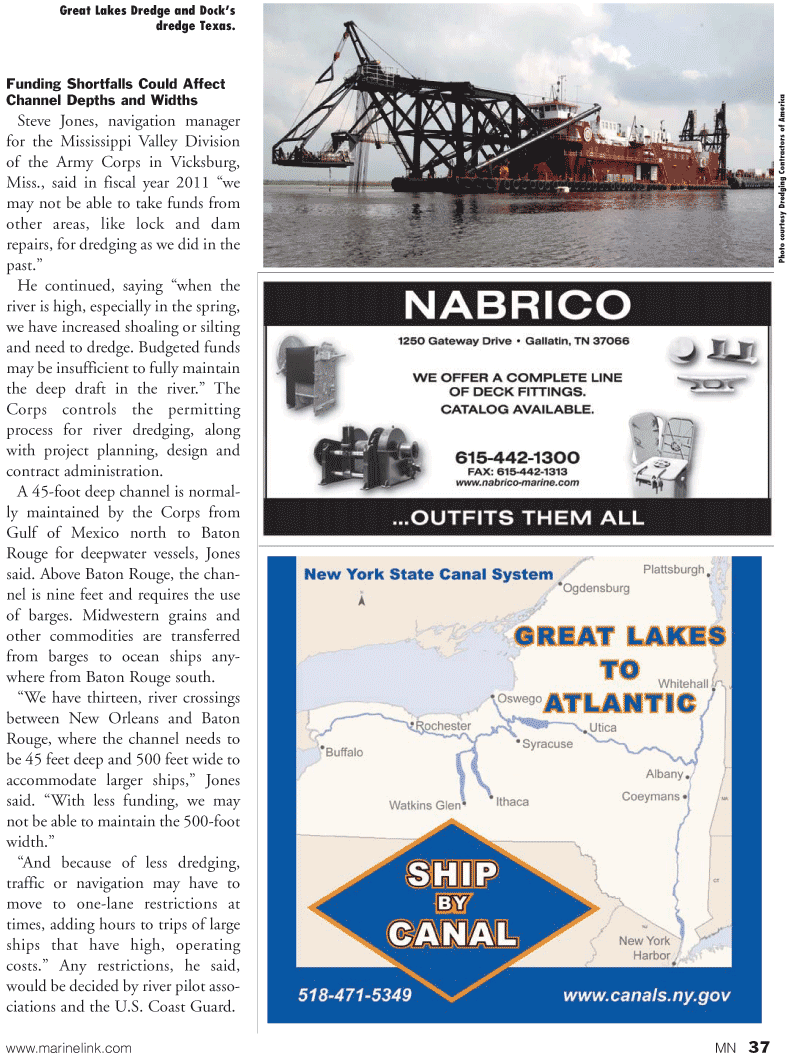
Page 37: of Marine News Magazine (February 2011)
Inland Waterways
Read this page in Pdf, Flash or Html5 edition of February 2011 Marine News Magazine
www.marinelink.com MN 37
Funding Shortfalls Could Affect
Channel Depths and Widths
Steve Jones, navigation manager for the Mississippi Valley Division of the Army Corps in Vicksburg,
Miss., said in fiscal year 2011 “we may not be able to take funds from other areas, like lock and dam repairs, for dredging as we did in the past.”
He continued, saying “when the river is high, especially in the spring, we have increased shoaling or silting and need to dredge. Budgeted funds may be insufficient to fully maintain the deep draft in the river.” The
Corps controls the permitting process for river dredging, along with project planning, design and contract administration.
A 45-foot deep channel is normal- ly maintained by the Corps from
Gulf of Mexico north to Baton
Rouge for deepwater vessels, Jones said. Above Baton Rouge, the chan- nel is nine feet and requires the use of barges. Midwestern grains and other commodities are transferred from barges to ocean ships any- where from Baton Rouge south. “We have thirteen, river crossings between New Orleans and Baton
Rouge, where the channel needs to be 45 feet deep and 500 feet wide to accommodate larger ships,” Jones said. “With less funding, we may not be able to maintain the 500-foot width.” “And because of less dredging, traffic or navigation may have to move to one-lane restrictions at times, adding hours to trips of large ships that have high, operating costs.” Any restrictions, he said, would be decided by river pilot asso- ciations and the U.S. Coast Guard.
Great Lakes Dredge and Dock’s dredge Texas.
Photo courtesy Dredging Contractors of America

 36
36

 38
38
